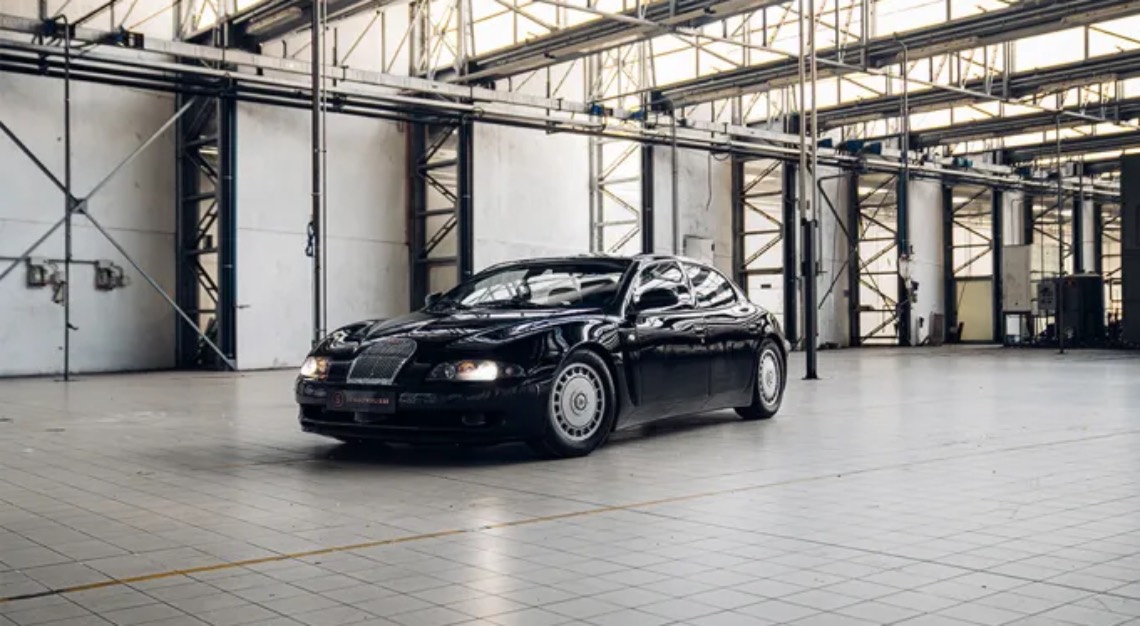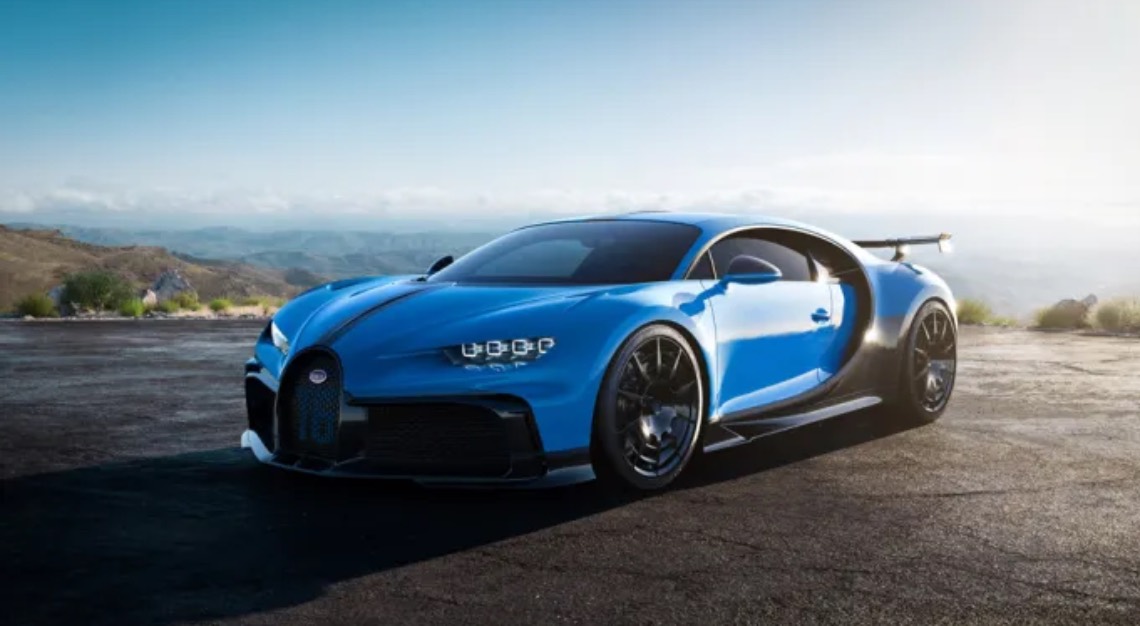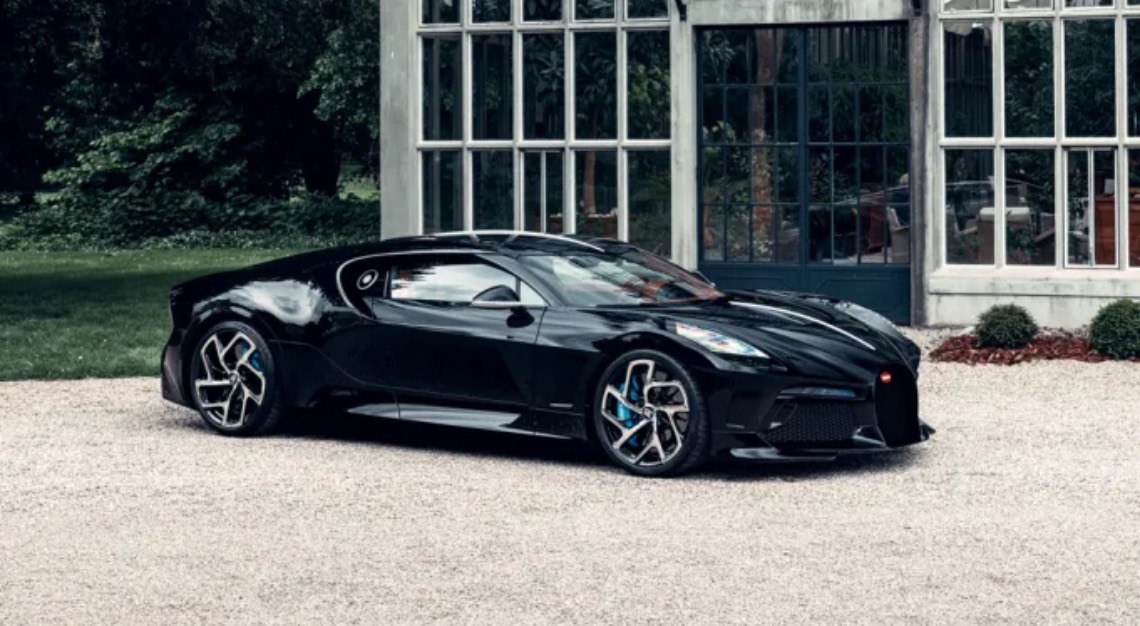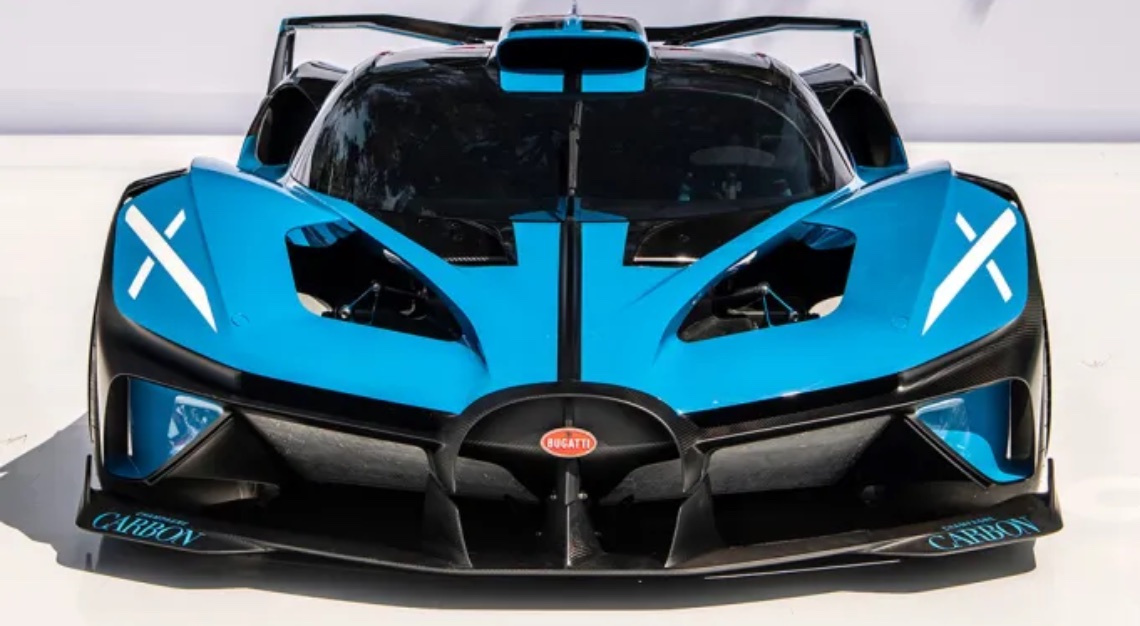These details make the French supercar marque even more amazing in our book
We all know the elemental facts about hypercar maker Bugatti. It doesn’t sell anything for less than two commas. It’s built one of the only cars to ever officially break the 483 km/hr barrier—although it was a slightly modified, “near-production” Chiron that achieved that feat—along with one of the most expensive new vehicles of all time, the La Voiture Noire. Its Type 57 SC Atlantic Coupe is arguably the most beautiful car ever built and, with a mere three left in existence, demonstrably one of the most expensive at US$40 million a piece. With the brand on the verge of a new era after merging with Croatian EV maker Rimac in 2021, there’s no bad time to see just how much you really know about Bugatti.
Bugatti built trains during the 1930s, including one that was the world’s fastest
The Bugatti name may be mainly associated with hypercars in 2022, but it has graced other products over the years, including airplane motors and, more recently, pool tables. The company also spent time during the 1930s working on trains, or, as it liked to call them, autorails. These vehicles may have never been used widely, but they were still impressive, setting multiple speed records between 1933 and 1936.

The Bugatti factory has narrowly avoided burning down—twice
Founded by Ettore Bugatti in Molsheim, France, Bugatti has been pushing the boundaries of physics and engine capabilities in pursuit of speed since 1909. In 1939, one of its early engines started a sizable fire due to a testing explosion. Reportedly, the surrounding area was in peril of being engulfed as well. In 2001, when testing the first Veyron engine, that 1,200 hp mill allegedly generated enough heat that the factory building was in danger of being scorched.
Bugatti has won the 24 Hours of Le Mans twice
We all know that Bugatti likes to show off on the test track, but it also used to do the same on the race track. Although the brand hasn’t entered in any major competitions for quite some time, it used to. In fact, Bugatti was a force in racing during the ’20s to ’30s. A privately entered Bugatti won the very first Monaco Grand Prix in 1929, but the marque’s greatest triumphs came at the 24 Hours of Le Mans, where cars driven by Jean-Pierre Wimille were victorious in 1937 (along with co-driver Robert Benoist) and 1939 (Pierre Veyron—more on him in a bit).
Bugatti briefly produced a saloon called the EB 112 in the mid-’90s
Since being brought back from the dead by Italian businessman Romano Artioli in the late ’80s, almost all of Bugatti’s effort and resources have gone toward the development of boundary-pushing hypercars. We say almost, though, because the brand briefly produced a saloon called the EB 112 before it was purchased by Volkswagen Auto Group in 1998. Why is the sedan all but forgotten at this point, you may ask? Because the brand only ever built three examples of the vehicle. On the rare occasion one of those hits the market, you can expect it to sell for in excess of US$1 million.

The Veyron was a giant pipe dream that nearly didn’t come to fruition
When Volkswagen’s Ferdinand Piech (grandson of famed Ferdinand Porsche) bought Bugatti back in the late 1990s, he had already been dreaming of a 1,000 hp super machine. His engineers had previously told him this would not be possible. Along came the Bugatti platform and his vision was realized several years later when the Veyron officially launched in 2005.
The Veyron requires 10 radiators to keep its quad-turbocharged W-16 engine functioning
Three radiators handle the engine, while another trio tackles the air-to-liquid intercoolers: a separate unit for the air-conditioning, another specifically modulates the engine oil, and yet another cools the transmission oil. One final radiator is dedicated to the differential oil. Each radiator takes 15 hours to construct, meaning the whole shebang takes nearly four weeks to complete the requisite 150 hours of labor.
A full-speed, 402-km/hr run in the Veyron would only last 15 minutes and would cost more than US$42,000
Technically, you’d only make it 12 minutes, because the 26.4-gallon fuel tank would be empty at that point. However, even if you had enough road—the Veyron can 407 km/hr, meaning it covers 6.78 kilometres a minute. You would need 81.4 kilometres of road to keep your foot buried for 12 minutes. But the Veyron’s tires wouldn’t last. They’re only good enough for running at 402 km/hr for about 15 minutes. After that, Bugatti would need to swap them for a new set, which reportedly will set you back a whopping US$42,000.

Bugatti lost a heap of money making the Veyron, reportedly about US$6 million per unit
The total cost to produce the Veyron’s 450 examples amounted to about US$1.62 billion, the bulk of which was research and development. Even selling some special versions of the Veyron for as much as US$3 million per car couldn’t help recoup those ginormous losses.
“Veyron” was a real, pedigreed race driver
It’s not just a cool-sounding name drummed up by marketers around a whiteboard. Pierre Veyron was a champion race driver between 1933 and 1953, notching plenty of victories, including several for Bugatti (most notably the 1939 24 Hours of Le Mans where he piloted the Type 57S with Jean-Pierre Wimille). Veyron became a test-driver for Bugatti in 1932.
The 500-unit Chiron production run sold out in just five years
The hypercar, by definition, is exclusive. This is especially true of Bugattis, though. In fact, the brand has only built two series production models, the Veyron and Chiron, since it was acquired by Volkswagen AG in 1998, both of which were produced in very limited numbers. Only 450 Veyrons were built during the 10 years it was in production. Amazingly, the Chiron sold through its entire production run, which will include 50 more examples than its predecessor, in half that time.

Michelin had to make special tires for the Chiron’s 489-km/hr speed run
The most restricting—and dangerous—element of a top speed trial is the tire the car is running. For the Chiron’s 489-km/hr sprint, Michelin took its Sport Cup 2 shoes and wove stronger metallic threads into the rubber. Exhaustive testing at speeds of up to 510 km/hr was conducted long before the shoes were fitted to the Chiron, and each tire was x-rayed after to find any imperfections.
The Chiron could’ve gone faster if it was tested at a higher elevation
The modded Chiron’s 489-km/hr speed isn’t the car’s ceiling. It was actually still gaining speed when test pilot Andy Wallace had to back off the throttle to enter an upcoming turn safely. The run was purposefully completed at Volkswagen Group’s Ehra-Lessien test track in Germany because it’s relatively near sea level. Had the Chiron run in Nevada, where Koenigsegg chose to set a 447-km/hr record in its Agera RS, the lower air pressure and density due to the higher elevation mean the Chiron would’ve been 24 km/hr faster—at least according to reps for Bugatti.
There are 3,460,251 kilometres of carbon fibre inside one Chiron
Bugatti claims that if all the carbon-fibre elements of a single Chiron were disassembled down to individual strands and connected end-to-end, it would total 3,460,251 kilometres. For reference, that’s about nine times the distance from the Earth to the moon (384,472 kilometres) or enough to wrap around the Earth 86 times.

The surface area of the Chiron’s catalytic converters totals about 25 New York City blocks
Catalytic converters are required on all vehicles to snag dangerous particulates from the exhaust system. Your daily driver likely employs one, so naturally, the Chiron uses six. If you add up all the surface area of the honeycomb catalyst material in the half-dozen units, you’d have about 230,266 square metres or about 25 New York City blocks (using the average measure of 9,290 square metres per block).
The Chiron’s high-tech air-conditioning system can cool an entire apartment
Bugattis are designed to go fast. Really fast. Because of this, the engineers at Molsheim have had rethink how you build a car. Just look at the cooling system in the Chiron. It doesn’t just have to stop the vehicle’s massive W-16 engine from overheating: It also needs to ensure the driver is comfortable as they hurtle toward 483 km/hr. To do this, the company had to come up with a system that reaches the desired cabin temperature quickly, maintaining it and operating as quietly as possible. It takes a powerful A/C to do this, specifically one powerful enough to cool a space measuring 80 square metres or about the size of a New York City one-bedroom.
The Chiron uses 3-D-printed brakes
How do you stop a 1,500 hp, 2,041-kg Chiron when it’s cooking along at 420 kilometres an hour? Phenomenal brakes. Those eight-piston titanium monobloc brake calipers are the first calipers to be produced on a 3-D printer. Not only are they 40 per cent lighter than traditional aluminium brakes, but they’re also the largest and most powerful brake caliper fitted to a production car.

Jean Bugatti’s influence extends all the way to the one-of-a-kind La Voiture Noire
Ettore Bugatti’s son Jean may have passed away more than 80 years ago, but his continued influence can be seen in the one-off La Voiture Noire. That’s because the US$18.7 million hypercar is based on one of the most important Bugattis of all time, the fabled Type 57 SC Atlantic, which was designed and driven by Jean in the ‘30s. While identity of La Voiture Noire’s owner remains one of the marque’s most intriguing mysteries, the oldest may be what happened to the car it’s based on: that Type 57 SC Atlantic, chassis No. 57453, which vanished shortly after the start of World War II and hasn’t been seen since.
The new Centodieci is a modern interpretation of the iconic EB 110
The EB 110 emerged in 1991 and set the automotive world ablaze. It’s the only series-production Bugatti built in Italy and set four world records, including the fastest acceleration, the fastest series-production sports car, the fastest sports car running on gas, and the fastest series-production car on ice. Bugatti decided to pay homage to that (brief) period when its factory was in Italy, and so the Centodieci (Italian for “110”) emerged in 2019. Unlike traditional modern Bugattis that feature a teardrop design, with an overall swooping line that starts higher in the front and tapers down in the rear, the 1,600 hp Centodieci—built on the Chiron platform—retains the original wedge shape of the EB 110: low in the front, higher in the rear.

The Centodieci’s taillight took six months to design and build
Engineers claim that the beautifully detailed and intricate taillight on the Centodieci was the single longest portion of the design and development process, requiring about a half a year. The challenge was creating a three-dimensional effect that was functional and striking.
Bugatti will put diamonds in the speedometer.
If your multimillion dollar Bugatti isn’t expensive nor rare enough, the factory will gladly allow you to check a box to insert one-carat diamonds in the speedometer. If you’re wondering why you’ve never seen a blinged-out Bugatti speedo, we are, too. It’s impossible to find a photo of one online and Bugatti remains mum as to how many customers have actually selected this option. All Chirons come standard with diamonds, though they’re somewhat hidden. Each of the four tweeters in the car’s Accuton sound system features a one-carat diamond membrane in order to offer optimum aural fidelity.
It took two years to complete the paint job on the Divo “Lady Bug”
You can’t accuse Bugatti of cutting corners. The brand fully commits itself to every single part of the design, development and manufacturing process. Just look at the paint job on the Divo “Lady Bug.” The marque’s designers spent two years coming up with an intricate diamond pattern for the car’s exterior to ensure it looks just like its insect namesake. The process was so time-consuming that at one point the team almost gave up. Fortunately, they kept at it, and the resulting car is nothing if not a standout, even among the other 39 Divos.

Design experts have deemed the Bolide the most beautiful hypercar in the world
Bugatti doesn’t just make several of the fastest production vehicles of all time, it can also claim one of the best looking—officially. Last fall, a panel of leading automobile designers named the track-only Bolide the most beautiful hypercar in the world at the 36th Festival Automobile International in Paris. “The Bolide was an entirely different challenge for our design team, and a kind of mental experiment where we stripped the car back to its W-16 quad-turbocharged heart and rebuild it with the bare minimum to create the most extreme Bugatti yet,” design director Achim Anscheidt said in statement following the event. “The key for us was to respect the technical requirements of Bolide, focusing first on the function and only then developing the form.”
Bugatti has recalls—big and small—like every other automaker
In 2022, Bugatti recalled a single Chiron to have a look at screws that hold the front frame, screws that if improperly installed might increase the risk of injury in a crash, which is the kind of verbiage standard in automotive recalls but still a bit jarring to hear about Bugatti, which sells fewer than 100 cars per year on average and whose cars also sell for many millions of dollars. The recall wasn’t the first of course — in 2022, Bugatti recalled 60 Chiron Pur Sportsover a potential issue with the tires. In 2018, two Chirons were recalled over side airbag heat shields. There have been others, too, but owners may not even notice, thanks to Bugatti’s team of “flying doctors,” the kind of service you might even expect.
Bugatti has a certified pre-owned programme, too
Every automaker does certified pre-owned car sales, which are a decent way for buyers to get newer cars at a discount, cars that often go through a rigorous inspection process, in part because a warranty is also usually offered as well. Much of that stock are cars coming off a lease, and CPO is a way for automakers and dealers to make some more money on product they’ve already moved once. Bugatti has a similar programme, though a little different, since Bugatti doesn’t do volume but exclusivity. Bugatti’s CPO offers a one-year warranty. “Our [Certified Pre-Owned] program means that those who want to savor the incomparable excellence of the Veyron and Chiron by opting for previously enjoyed examples, can now benefit from the exemplary customer service and unique attention to detail that only authorized Bugatti Service Partners are able to offer,” a Bugatti executive said at the program’s launch in 2022.

Bugatti thinks a lot about weight, except when it comes to its logo
The Bugatti logo found on its cars — a red-and-white badge that has been with Bugatti since the beginning — is made of 150 grams of sterling silver and called the Macaron. “It is one of the very few components on our vehicles where weight does not play a role,” Stephan Winkelmann, Bugatti’s then president, said in 2020. Like other automaker badges, Bugatti’s badge comes with its own mythology too, having been crafted by Ettore Bugatti over a century ago. “In addition to the easily legible name lettering in white on a red background, the badge also features the initials EB (for Ettore Bugatti) above this in black, as well as 60 red dots on a white surrounding border. Red stands for power and passion, white for elegance and nobility, and black for excellence and courage,” Bugatti says. No matter how small the detail on a car selling for millions, someone has always given it a lot of thought.
This story was first published by Robb Report USA






